Zhengyu Zhu
AI-enabled STAR-RIS aided MISO ISAC Secure Communications
Feb 27, 2024



Abstract:A simultaneous transmitting and reflecting reconfigurable intelligent surface (STAR-RIS) aided integrated sensing and communication (ISAC) dual-secure communication system is studied in this paper. The sensed target and legitimate users (LUs) are situated on the opposite sides of the STAR-RIS, and the energy splitting and time switching protocols are applied in the STAR-RIS, respectively. The long-term average security rate for LUs is maximized by the joint design of the base station (BS) transmit beamforming and receive filter, along with the STAR-RIS transmitting and reflecting coefficients, under guarantying the echo signal-to-noise ratio thresholds and rate constraints for the LUs. Since the channel information changes over time, conventional convex optimization techniques cannot provide the optimal performance for the system, and result in excessively high computational complexity in the exploration of the long-term gains for the system. Taking continuity control decisions into account, the deep deterministic policy gradient and soft actor-critic algorithms based on off-policy are applied to address the complex non-convex problem. Simulation results comprehensively evaluate the performance of the proposed two reinforcement learning algorithms and demonstrate that STAR-RIS is remarkably better than the two benchmarks in the ISAC system.
Adaptive-avg-pooling based Attention Vision Transformer for Face Anti-spoofing
Jan 10, 2024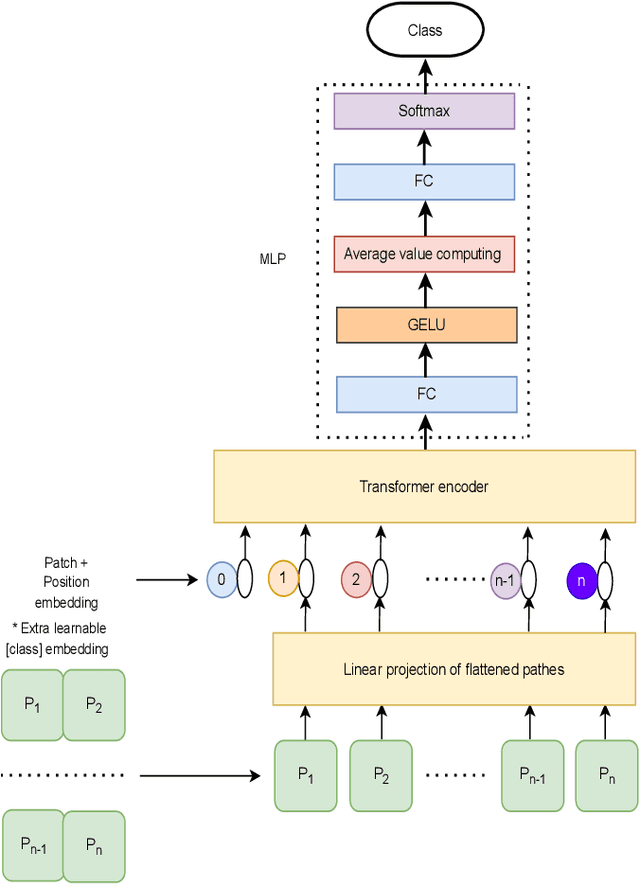
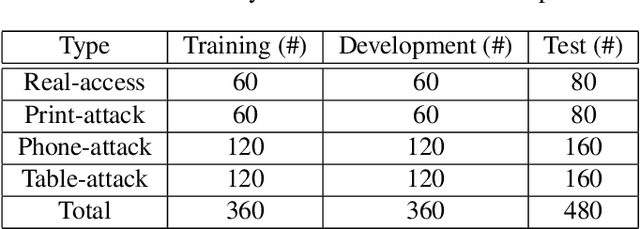
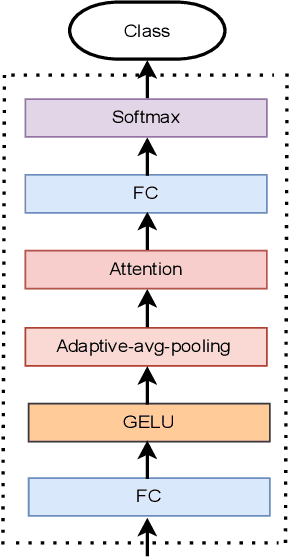

Abstract:Traditional vision transformer consists of two parts: transformer encoder and multi-layer perception (MLP). The former plays the role of feature learning to obtain better representation, while the latter plays the role of classification. Here, the MLP is constituted of two fully connected (FC) layers, average value computing, FC layer and softmax layer. However, due to the use of average value computing module, some useful information may get lost, which we plan to preserve by the use of alternative framework. In this work, we propose a novel vision transformer referred to as adaptive-avg-pooling based attention vision transformer (AAViT) that uses modules of adaptive average pooling and attention to replace the module of average value computing. We explore the proposed AAViT for the studies on face anti-spoofing using Replay-Attack database. The experiments show that the AAViT outperforms vision transformer in face anti-spoofing by producing a reduced equal error rate. In addition, we found that the proposed AAViT can perform much better than some commonly used neural networks such as ResNet and some other known systems on the Replay-Attack corpus.
Intelligent Reflective Surface Assist Integrated Sensing and Wireless Power Transfer
Sep 26, 2023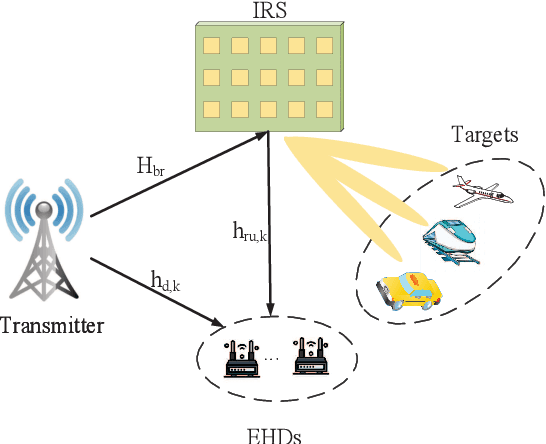
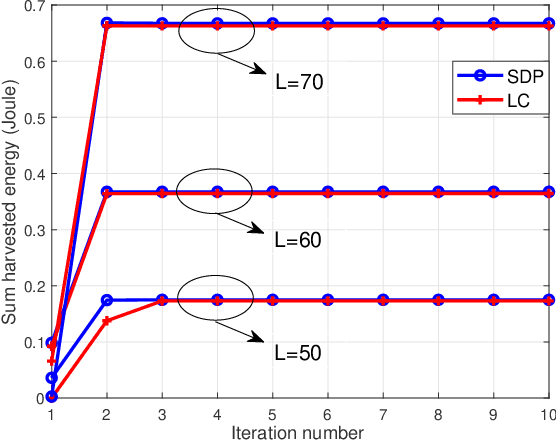
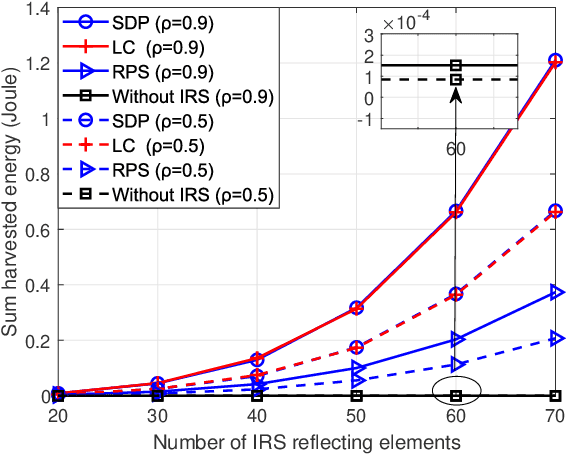
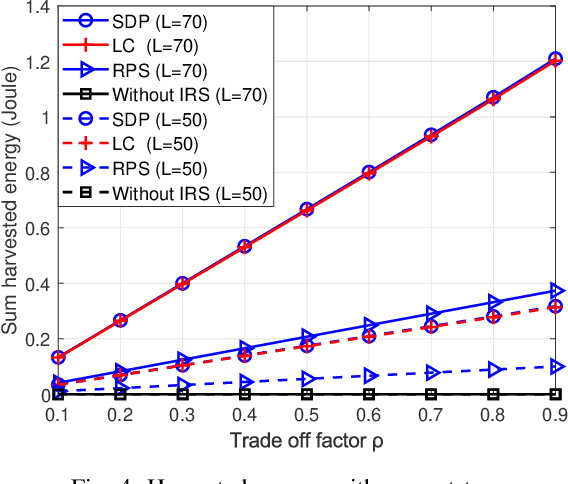
Abstract:Wireless sensing and wireless energy are enablers to pave the way for smart transportation and a greener future. In this paper, an intelligent reflecting surface (IRS) assisted integrated sensing and wireless power transfer (ISWPT) system is investigated, where the transmitter in transportation infrastructure networks sends signals to sense multiple targets and simultaneously to multiple energy harvesting devices (EHDs) to power them. In light of the performance tradeoff between energy harvesting and sensing, we propose to jointly optimize the system performance via optimizing the beamforming and IRS phase shift. However, the coupling of optimization variables makes the formulated problem non-convex. Thus, an alternative optimization approach is introduced and based on which two algorithms are proposed to solve the problem. Specifically, the first one involves a semi-definite program technique, while the second one features a low-complexity optimization algorithm based on successive convex approximation and majorization minimization. Our simulation results validate the proposed algorithms and demonstrate the advantages of using IRS to assist wireless power transfer in ISWPT systems.
Joint Beamforming Optimization for Active STAR-RIS Assisted ISAC systems
Aug 11, 2023



Abstract:In this paper, we investigate an active simultaneously transmitting and reflecting reconfigurable intelligent surface (STAR-RIS) assisted integrated sensing and communications (ISAC) system, in which a dual-function base station (DFBS) equipped with multiple antennas provides communication services for multiple users with the assistance of an active STARRIS and performs target sensing simultaneously. Through optimizing both the DFBS and STAR-RIS beamforming jointly under different work modes, our purpose is to achieve the maximized communication sum rate, subject to the minimum radar signal-to-noise ratio (SNR) constraint, active STAR-RIS hardware constraints, and total power constraint of DFBS and active STAR-RIS. To solve the non-convex optimization problem formulated, an efficient alternating optimization algorithm is proposed. Specifically, the fractional programming scheme is first leveraged to turn the original problem into a structure with more tractable, and subsequently the transformed problem is decomposed into multiple sub-problems. Next, we develop a derivation method to obtain the closed expression of the radar receiving beamforming, and then the DFBS transmit beamforming is optimized under the radar SNR requirement and total power constraint. After that, the active STAR-RIS reflection and transmission beamforming are optimized by majorization minimiation, complex circle manifold and convex optimization techniques. Finally, the proposed schemes are conducted through numerical simulations to show their benefits and efficiency.
A Unified Framework for IRS Enabled Wireless Powered Sensor Networks
Mar 19, 2021
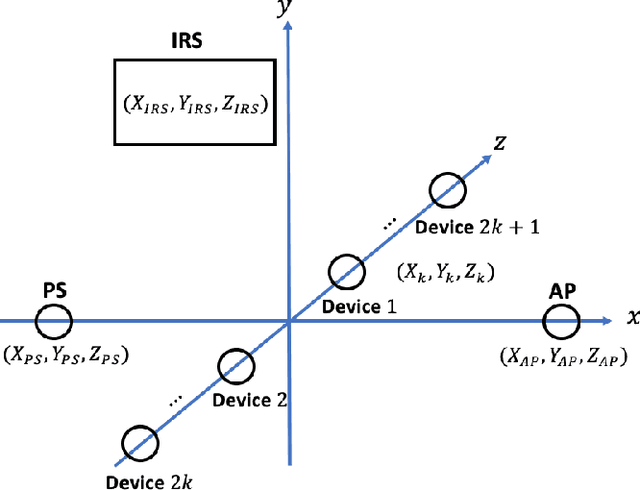
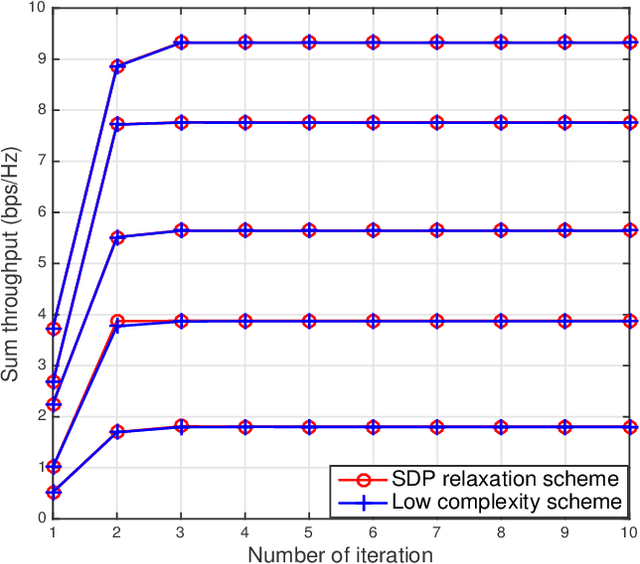
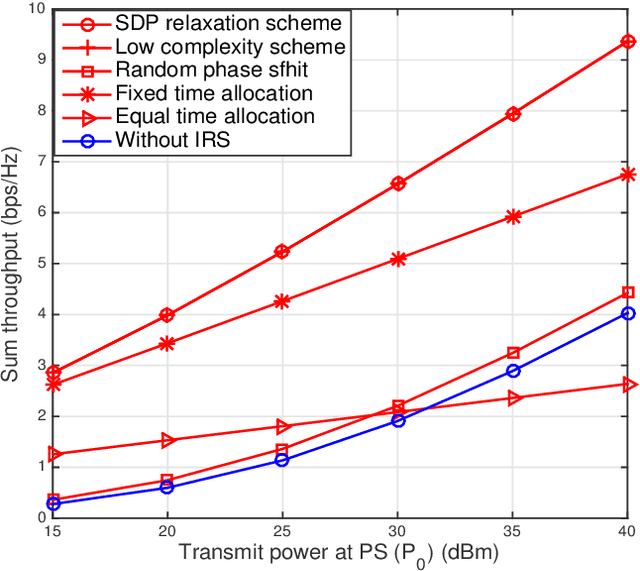
Abstract:This paper unveils the importance of intelligent reflecting surface (IRS) in a wireless powered sensor network (WPSN). Specifically, a multi-antenna power station (PS) employs energy beamforming to provide wireless charging for multiple Internet of Things (IoT) devices, which utilize the harvested energy to deliver their own messages to an access point (AP). Meanwhile, an IRS is deployed to enhance the performances of wireless energy transfer (WET) and wireless information transfer (WIT) by intelligently adjusting the phase shift of each reflecting element. To evaluate the performance of this IRS assisted WPSN, we are interested in maximizing its system sum throughput to jointly optimize the energy beamforming of the PS, the transmission time allocation, as well as the phase shifts of the WET and WIT phases. The formulated problem is not jointly convex due to the multiple coupled variables. To deal with its non-convexity, we first independently find the phase shifts of the WIT phase in closed-form. We further propose an alternating optimization (AO) algorithm to iteratively solve the sum throughput maximization problem. To be specific, a semidefinite programming (SDP) relaxation approach is adopted to design the energy beamforming and the time allocation for given phase shifts of WET phase, which is then optimized for given energy beamforming and time allocation. Moreover, we propose an AO low-complexity scheme to significantly reduce the computational complexity incurred by the SDP relaxation, where the optimal closed-form energy beamforming, time allocation, and phase shifts of the WET phase are derived. Finally, numerical results are demonstrated to validate the effectiveness of the proposed algorithm, and highlight the beneficial role of the IRS in comparison to the benchmark schemes.
 Add to Chrome
Add to Chrome Add to Firefox
Add to Firefox Add to Edge
Add to Edge